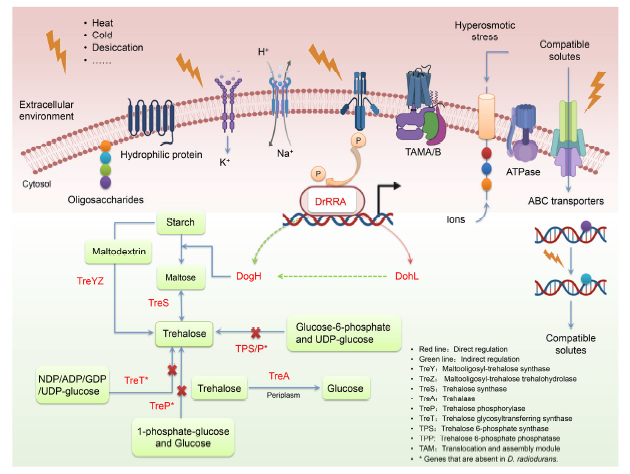Abstract:
Deinococcus radiodurans is a microorganism that can adjust, survive or thrive in hostile conditions and has been described as “the strongest microorganism in the world”. The underlying mechanism behind the exceptional resistance of this robust bacterium still remains unclear. Osmotic stress, caused by abiotic stresses such as desiccation, salt stress, high temperatures and freezing, is one of the main stresses suffered by microorganisms, and it is also the basic response pathway by which organisms cope with environmental stress. In this study, a unique trehalose synthesis-related gene, dogH (Deinococcus radiodurans orphan glycosyl hydrolase-like family 10), which encodes a novel glycoside hydrolase, was excavated using a multi-omics combination method. The content accumulation of trehalose and its precursors under hypertonic conditions was quantified by HPLCMS.
Ours results showed that the dogH gene was strongly induced by sorbitol and desiccation stress in D. radiodurans. DogH glycoside hydrolase hydrolyzes _-1,4-glycosidic bonds by releasing maltose from starch in the regulation of soluble sugars, thereby increasing the concentration of TreS (trehalose synthase) pathway precursors and trehalose biomass. The maltose and alginate content in D. radiodurans amounted to 48 μg mg protein−1 and 45 μg mg protein−1, respectively, which were 9 and 28 times higher than those in E. coli, respectively. The accumulation of greater intracellular concentrations of osmoprotectants may be the true reason for the higher osmotic stress tolerance of D. radiodurans.
Key Words:
Deinococcus radiodurans; osmotic stress; trehalose; novel glycoside hydrolase; DogH



